Roman Britain & Metal Detecting: The Ultimate Guide to Unearthing Treasure from AD 43–410
- DiggingHistory.co.uk
- Sep 19
- 5 min read
Why Roman Finds Dominate UK Soil
When Emperor Claudius invaded Britain in AD 43, the island became one of Rome’s most remote provinces and one of the richest detecting landscapes in the modern world. For nearly 400 years, legions, traders, settlers, and locals filled the ground with objects: coins, jewellery, brooches, tools, weapons, and ritual offerings.
For detectorists, Roman Britain is a goldmine. Coins turn up by the thousand, villas reveal luxury lifestyles, and hoards offer moments of frozen history. Some of the UK’s most famous finds, the Hoxne Hoard, the Frome Hoard, the Cunetio Hoard, all came from detectorists’ coils meeting Roman soil.
This guide explores Roman Britain from a detectorist’s perspective: what the Romans left, why it survives, where to look, and how to record responsibly under UK law.
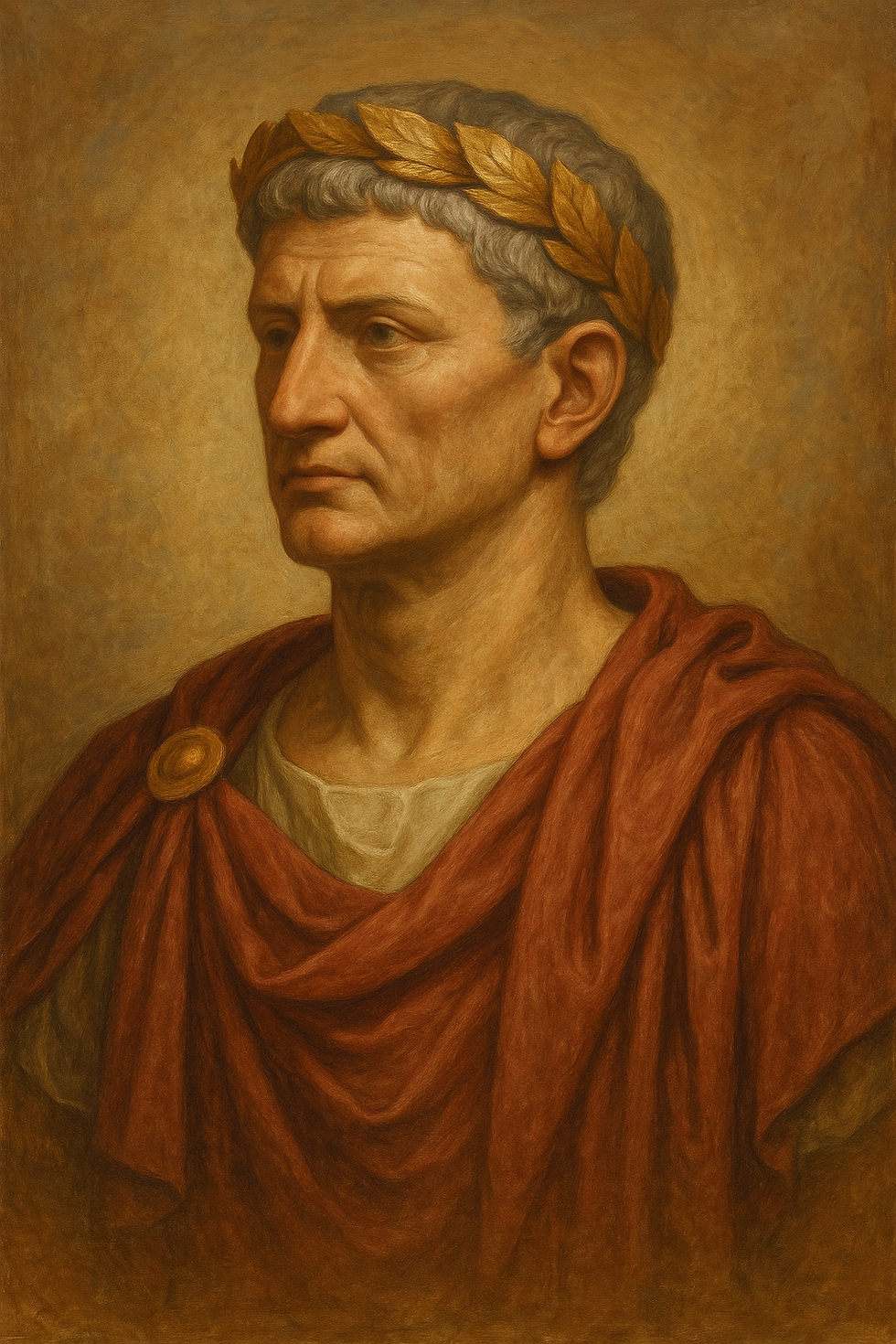
Roman Britain at a Glance (AD 43–410)
AD 43 – Emperor Claudius launches invasion; legions land in Kent.
AD 61 – Boudica’s revolt devastates Londinium, Verulamium, and Colchester.
AD 122 – Hadrian orders construction of Hadrian’s Wall.
AD 142 – Antonine Wall briefly built further north.
AD 3rd century – Periods of crisis bring coin hoards and fortifications.
AD 4th century – Christianity spreads; villas flourish; coinage debased.
AD 410 – Roman administration withdraws; Britain left to fend for itself.
For detectorists, every century left distinct signatures in the soil: early conquest forts, booming villa estates, late hoards buried in uncertainty.
Roman Coinage in Britain: A Detectorist’s Guide
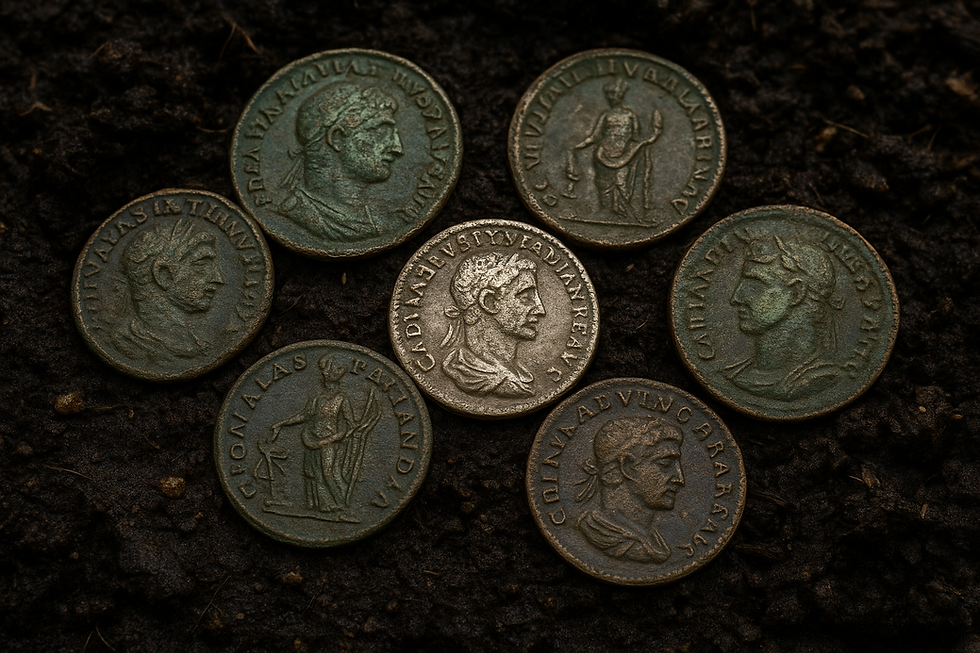
Roman coins are the single most common Roman find in the UK. They’re abundant, datable, and often pinpoint phases of occupation.
Pre-Conquest Republican Imports
Before AD 43, some tribes already imported Roman coins, especially in the southeast. Republican silver denarii and bronze coins sometimes appear in late Iron Age contexts.
Early Empire (1st–2nd century AD)
Coins of emperors like Claudius, Nero, Vespasian, Hadrian, Antoninus Pius are plentiful. Denarii and sestertii circulated widely; military pay meant steady losses.
Crisis Coinage (3rd century AD)
Britain was rocked by political instability. Debased bronze and silver issues flooded in, and emperors like Gallienus and Postumus issued vast amounts. Coin hoards from this period are common.
Late Empire (4th–early 5th century AD)
The most common finds for detectorists today: small bronze coins of emperors like Constantine, Valentinian, and Honorius. Gold solidi are rare but highly prized.
Famous coin hoards:
Cunetio Hoard (Wiltshire, 1978) – 54,951 coins spanning AD 250–275.
Seaton Down Hoard (Devon, 2013) – 22,888 coins, mostly of AD 274.
Frome Hoard (Somerset, 2010) – 52,503 coins from AD 253–305.
Brooches & Personal Adornment

Roman dress relied on fibulae (brooches) to fasten clothing. These are among the most diagnostic finds for detectorists.
Dolphin brooches – 1st century, named for their curved profile.
Trumpet brooches – 2nd century, common in Britain.
Crossbow brooches – late Roman, used by officials and soldiers.
Other finds include finger rings, bracelets, intaglios (engraved gems), and silver or gold jewellery. Many survive in farmland soils, giving glimpses into personal style.
Military & Everyday Artefacts
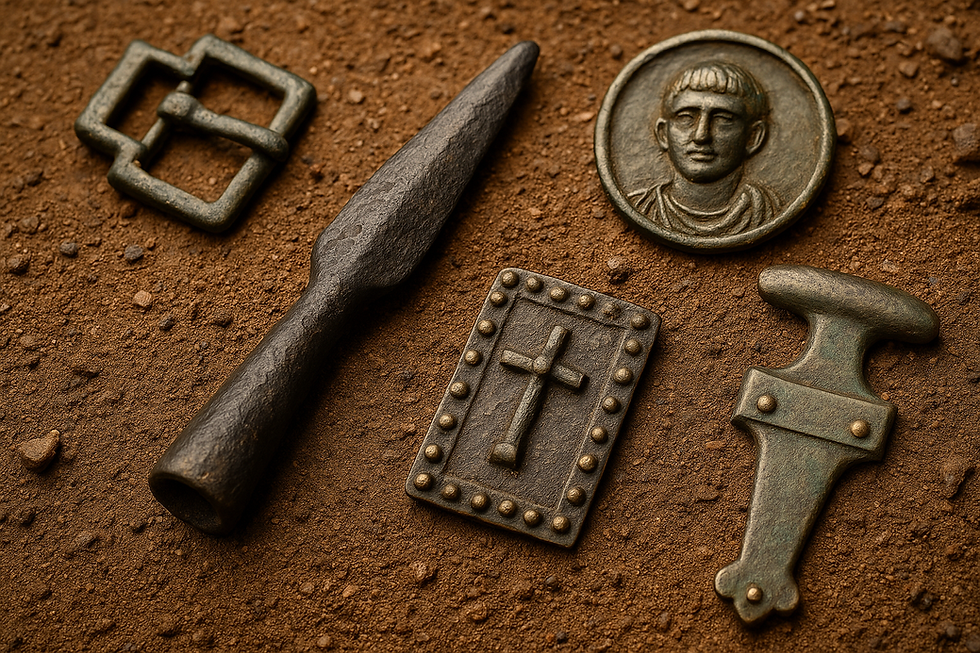
Roman soldiers and civilians lost countless items:
Belt buckles and fittings – distinctive military types.
Horse harness fittings – often highly decorative.
Hobnails – small iron studs from boots, common near forts.
Tools – chisels, knives, medical instruments, keys.
One of the most famous detectorist finds is the Staffordshire Moorlands Pan (2003), a decorated bronze vessel inscribed with names of Hadrian’s Wall forts, found by a metal detectorist and acquired by the British Museum.
Villas, Towns & Settlements

Villas
Roman villas dotted the countryside, especially in the south. They were farming estates with mosaic floors, bathhouses, and fine goods. For detectorists, villas are hotspots for coins, brooches, rings, and building material.
Towns
Major towns like Londinium, Verulamium (St Albans), Camulodunum (Colchester), and Bath produced immense material culture. While the towns themselves are protected, their hinterlands can still yield finds with permission.
Roads & Waystations
Roman roads (Watling Street, Fosse Way, Ermine Street) were lifelines. Coins and brooches cluster around crossroads, fords, and mansiones (roadside inns).
Ritual & Religion
Romans blended local and imperial beliefs. Detectorists sometimes find:
Miniature votive axes or tools.
Small bronze figurines of gods (Mars, Mercury, Venus).
Offerings at springs and rivers (e.g. Bath’s sacred spring).
The Water Newton Treasure (Cambridgeshire, 3rd–4th century) is Britain’s earliest Christian silver hoard, including chalices and plates, discovered by a detectorist.
Famous Roman Detectorist Finds
Hoxne Hoard (Suffolk, 1992)
Found by Eric Lawes with a detector.
14,865 coins, 200+ gold and silver objects.
Valued at £1.75m; Britain’s largest hoard of late Roman precious metal.
Frome Hoard (Somerset, 2010)
Found by Dave Crisp.
52,503 coins in a massive ceramic pot.
Important evidence of ritual hoarding in late Roman Britain.
Seaton Down Hoard (Devon, 2013)
22,888 copper-alloy coins.
Shows everyday currency circulation in the late 3rd century.
Cunetio Hoard (Wiltshire, 1978)
54,951 coins, mostly radiates from AD 250–275.
Still the largest Roman coin hoard in Britain.
Staffordshire Moorlands Pan (2003)
Decorated bronze souvenir of Hadrian’s Wall.
Found by detectorist Kevin Blackburn.
Detecting the Roman Landscape
Villas & Estates
Look for signs of building rubble (tile, pottery scatters). Many villa fields yield steady finds.
Roman Roads
Use OS maps and LIDAR to trace Roman alignments. Junctions, fords, and nearby ridges often have coin scatters.
Military Sites
Frontier forts and marching camps leave artefacts, but many are scheduled monuments — always check legality.
Shrines & Temples
Natural springs, hilltops, and enclosures were sacred. Offerings sometimes survive in surrounding soil.
Recognising Roman Finds
Coins: Imperial busts, Latin inscriptions, reverse gods/figures.
Brooches: Dolphin, trumpet, and crossbow types.
Jewellery: Gem-set rings, twisted silver bracelets.
Military gear: Belt plates, harness fittings, hobnails.
Laws & Responsible Detecting
England, Wales & NI: Treasure Act 1996
2+ coins over 300 years old count as Treasure.
Gold/silver items over 300 years old = Treasure.
Must be reported to coroner via local FLO.
Scotland: Treasure Trove
All significant finds claimable by the Crown.
Report to the Treasure Trove Unit.
Always:
Get written landowner permission.
Avoid scheduled sites.
Record all finds with PAS or TTU.
What Roman Treasure Finds Teach Us
Hoxne Hoard: Elite wealth hidden during upheaval.
Frome Hoard: Ritual deposition as much as savings.
Cunetio & Seaton Down: Coinage in crisis and abundance.
Water Newton Treasure: Christianity’s arrival in Britain.
Staffordshire Moorlands Pan: Souvenirs of empire.
These finds reshape our knowledge and highlight the role of detectorists.
Practical Tips for Roman Detecting
Research villa-rich counties: Hampshire, Wiltshire, Somerset, Gloucestershire.
Overlay Roman roads with modern maps.
Check field edges by rivers for settlements.
Expect late bronze coins — plentiful but vital data.
Watch for coin scatters — clusters suggest structures.
FAQs
Where are Roman coins most common in the UK? Roman coins are widespread, but especially common in southern and eastern England near villas, towns, and Roman roads.
What’s the biggest Roman treasure found in Britain? The Hoxne Hoard (1992, Suffolk) with nearly 15,000 coins and 200+ gold and silver objects.
Is it legal to keep Roman coins found in the UK? If they qualify as Treasure, they must be reported; otherwise, record with PAS and respect landowner agreements.
Every Signal is a Roman Story
Roman Britain lasted nearly four centuries. Coins, brooches, jewellery, tools, and hoards still lie beneath our fields. Detectorists who record responsibly aren’t just finding treasure, they’re rewriting history.
From the Hoxne Hoard to the Frome Hoard, from villas to Hadrian’s Wall, the Roman layer is one of Britain’s richest. Swing your coil carefully, research wisely, and you may one day join the roll of detectorists whose finds changed our understanding of Rome in Britain.
Thank You for Reading
Thank you for taking the time to explore the Roman layer of Britain’s past with us. Every coin, brooch, or hoard tells part of the story of how Rome shaped our landscape and how today’s detectorists keep that history alive.
👉 If you found this guide useful, please share it with fellow detectorists, history lovers, and friends. Together, we can spread knowledge and keep Britain’s buried history in the spotlight.


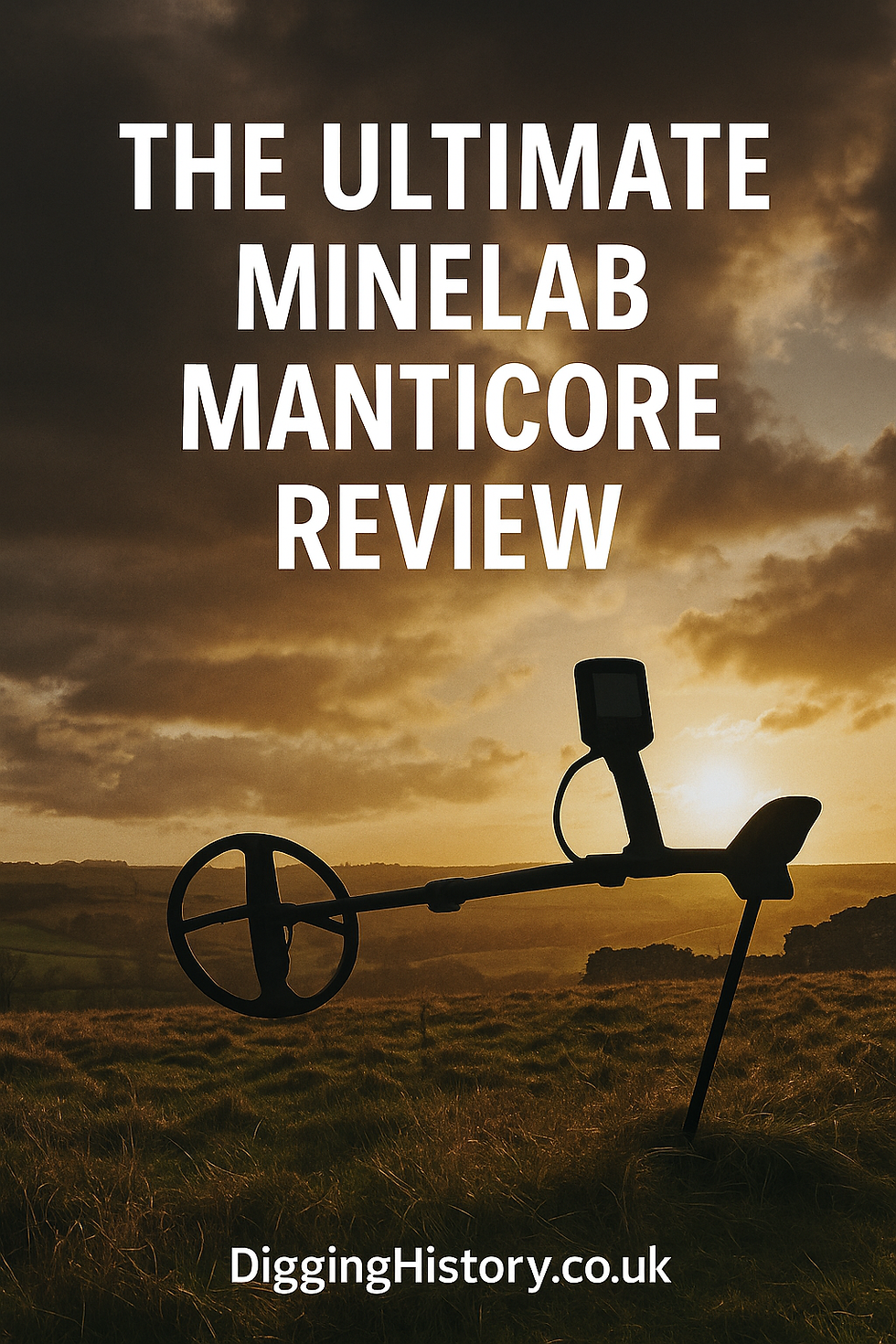
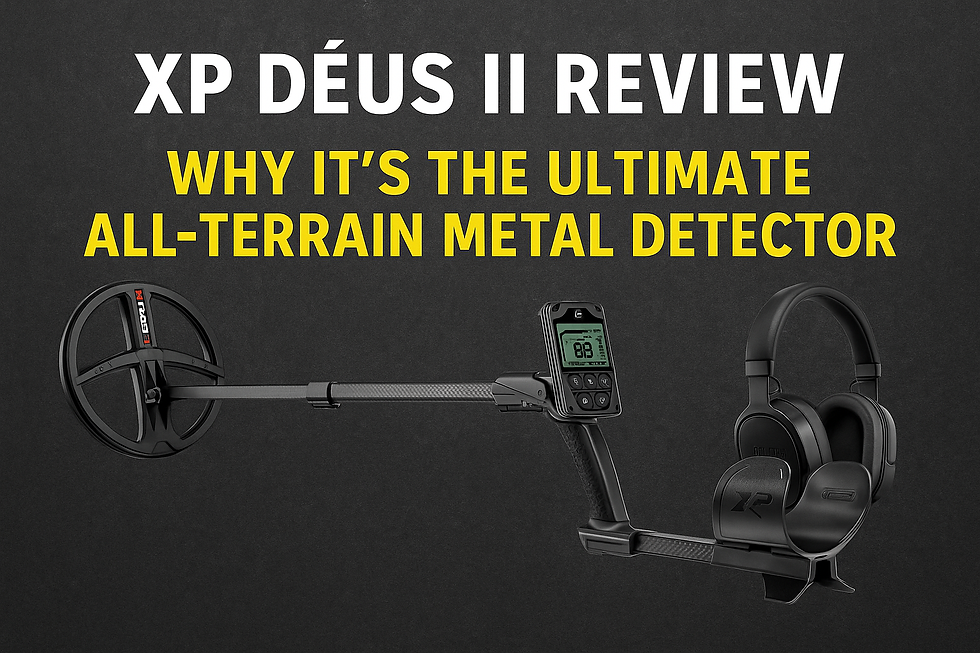

Comments